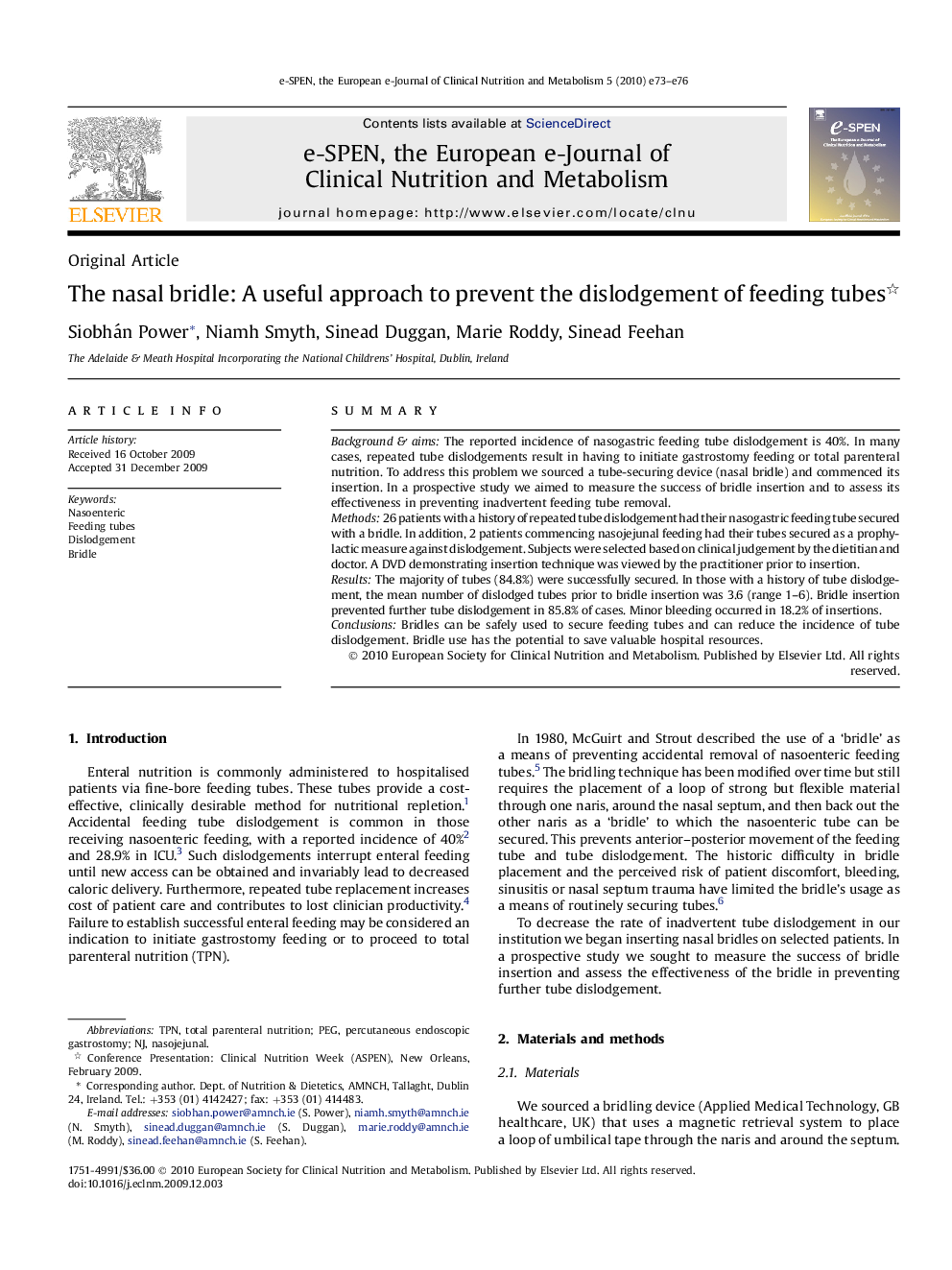| Article ID | Journal | Published Year | Pages | File Type |
|---|---|---|---|---|
| 2691308 | e-SPEN, the European e-Journal of Clinical Nutrition and Metabolism | 2010 | 4 Pages |
SummaryBackground & aimsThe reported incidence of nasogastric feeding tube dislodgement is 40%. In many cases, repeated tube dislodgements result in having to initiate gastrostomy feeding or total parenteral nutrition. To address this problem we sourced a tube-securing device (nasal bridle) and commenced its insertion. In a prospective study we aimed to measure the success of bridle insertion and to assess its effectiveness in preventing inadvertent feeding tube removal.Methods26 patients with a history of repeated tube dislodgement had their nasogastric feeding tube secured with a bridle. In addition, 2 patients commencing nasojejunal feeding had their tubes secured as a prophylactic measure against dislodgement. Subjects were selected based on clinical judgement by the dietitian and doctor. A DVD demonstrating insertion technique was viewed by the practitioner prior to insertion.ResultsThe majority of tubes (84.8%) were successfully secured. In those with a history of tube dislodgement, the mean number of dislodged tubes prior to bridle insertion was 3.6 (range 1–6). Bridle insertion prevented further tube dislodgement in 85.8% of cases. Minor bleeding occurred in 18.2% of insertions.ConclusionsBridles can be safely used to secure feeding tubes and can reduce the incidence of tube dislodgement. Bridle use has the potential to save valuable hospital resources.
